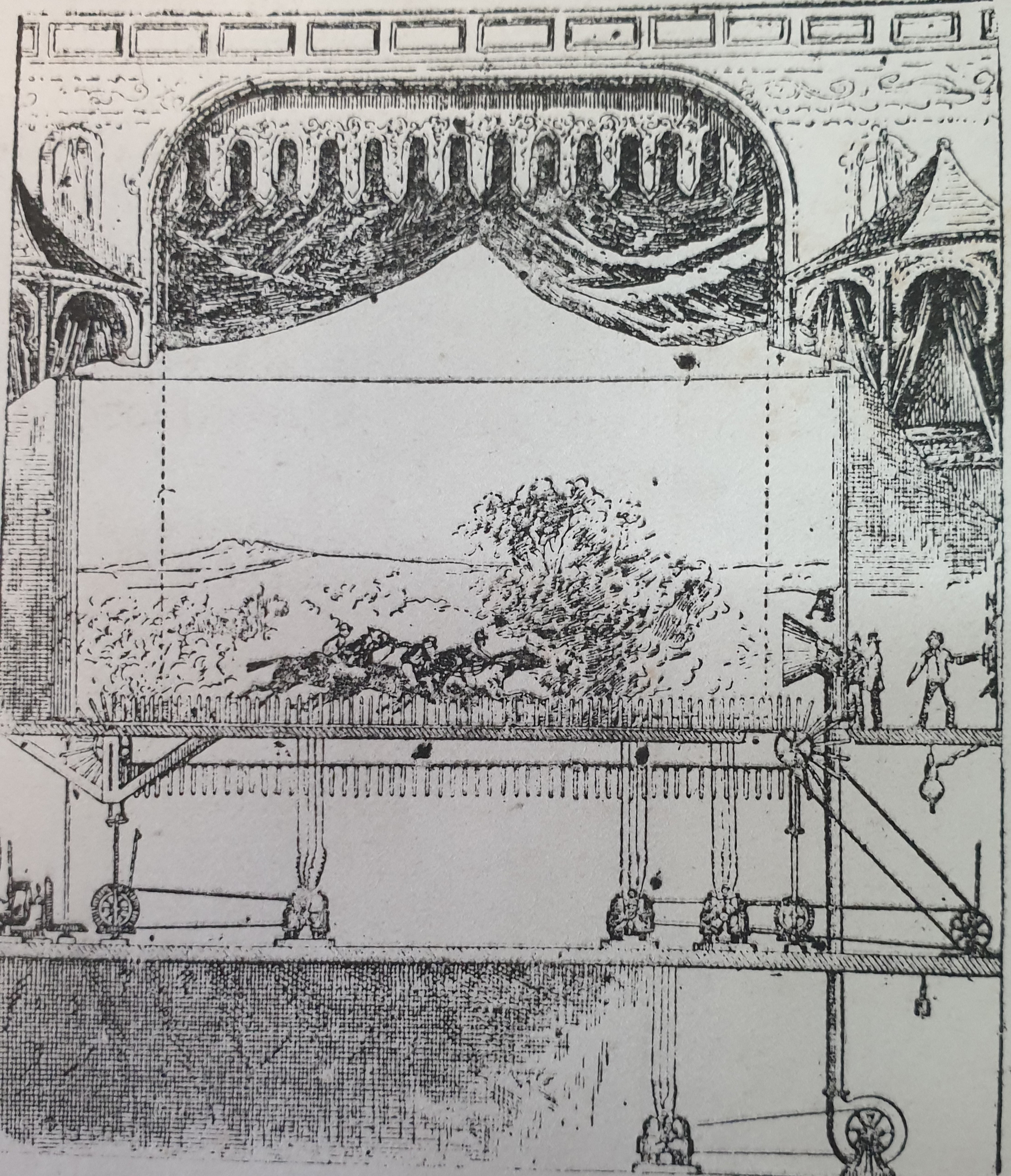A NEW TYPE OF HIPPODROME (October 1890)
It is a racecourse in the room. A mechanic has put into practice the idea of itinerant ways, with the difference that, instead of aiming to accelerate the progress of the person who uses them, the mechanism, in this particular case, tends to contrary, to annihilate the effect of his efforts to move forward. This plot was built for a play whose main stage is a galloping race in which horses, perfectly alive, are stimulated by very real shots of spurs and whip, to the great enthusiasm of the spectators. The turf (by metaphor, turf meaning turf) is hidden under their feet and tends to bring them back; all their velocity serves only to overcome this current and to maintain them in one and the same point; the backdrop of the scenery unfolds itself in the opposite direction of the horse walk, with a speed of 500 meters per minute; the length of this canvas is nearly 30 meters; the foreground that hides only the feet of the horses is driven with a much slower speed; As a result, spectators perceive the impression of a real race on a circular racetrack of which they would occupy the center. To complete the illusion, a fan drives back the dust raised by the feet of the horses. This system is based on a very simple principle. Each horse gallops on one of these tracks, which a transmission system allows to increase or slow down the speed, so as to give advance to this or that horse. The illusion was such that the spectators rose from their seats, shouting encouragement to the favorite, while the spectators waved handkerchiefs and fans.
|
 Last winter, a New York theater exhibited something new.
Last winter, a New York theater exhibited something new.